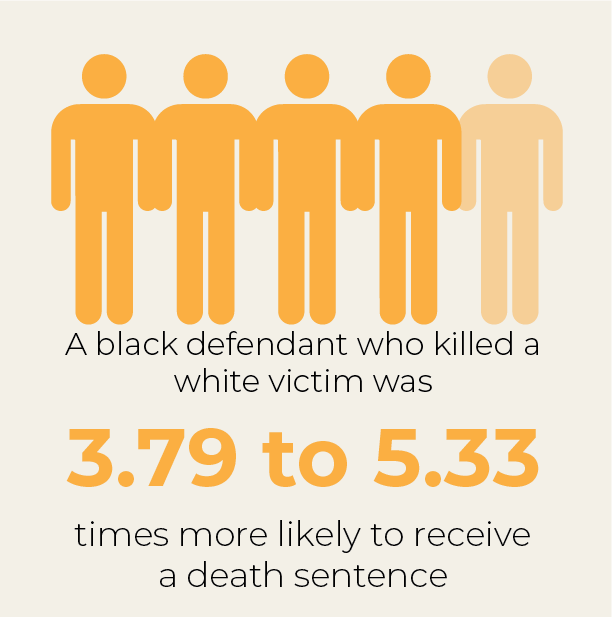Ohioans are ready to be rid of the racially biased and horrible system that is the death penalty. The death penalty continues to perpetuate racial discrimination in a situation of ultimate cost.

Discrimination in Death
In 2020, the Columbia Human Rights Law Review published a study of 599 aggravated murder charges in Hamilton County. The researchers found that a case involving at least one white victim was 4.54 times more likely to be charged capitally.
The Hamilton County Study also found that a black defendant who killed at least one white victim was 3.79 times more likely to face the death penalty than other similarly situated defendants and 5.33 times more likely than all other cases.
15%
People of color make up 15% of Ohio’s population.
56%
People of color make up 56% of Ohio’s death row population.
72%
People of color make up 72% of death row exonorees in Ohio.
33%
People of color make up 33% of those executed in Ohio.
Discrimination in Process
There are many factors allowing racial discrimination during the legal process, both in Ohio and nationally. One of the most significant is prosecutorial discretion. Individual prosecutors decide when to seek the death penalty. But the definition of “death eligible” is so broad that there is little guidance for prosecutors to make that decision, leaving room for bias and other factors to influence the decision-making process.
Juries also present an opportunity for racial discrimination. According to the Death Penalty Information Center, at least one out of five African Americans executed in the U.S. since 1977 were tried in front of all-white juries.
In March 2020, the Ohio Supreme Court granted a death row inmate a new trial because his attorney failed to strike a juror who “strongly agree(d)” with a statement on the juror questionnaire that said “some races and/or ethnic groups tend to be more violent than others.” The juror wrote “Blacks” as their explanation.